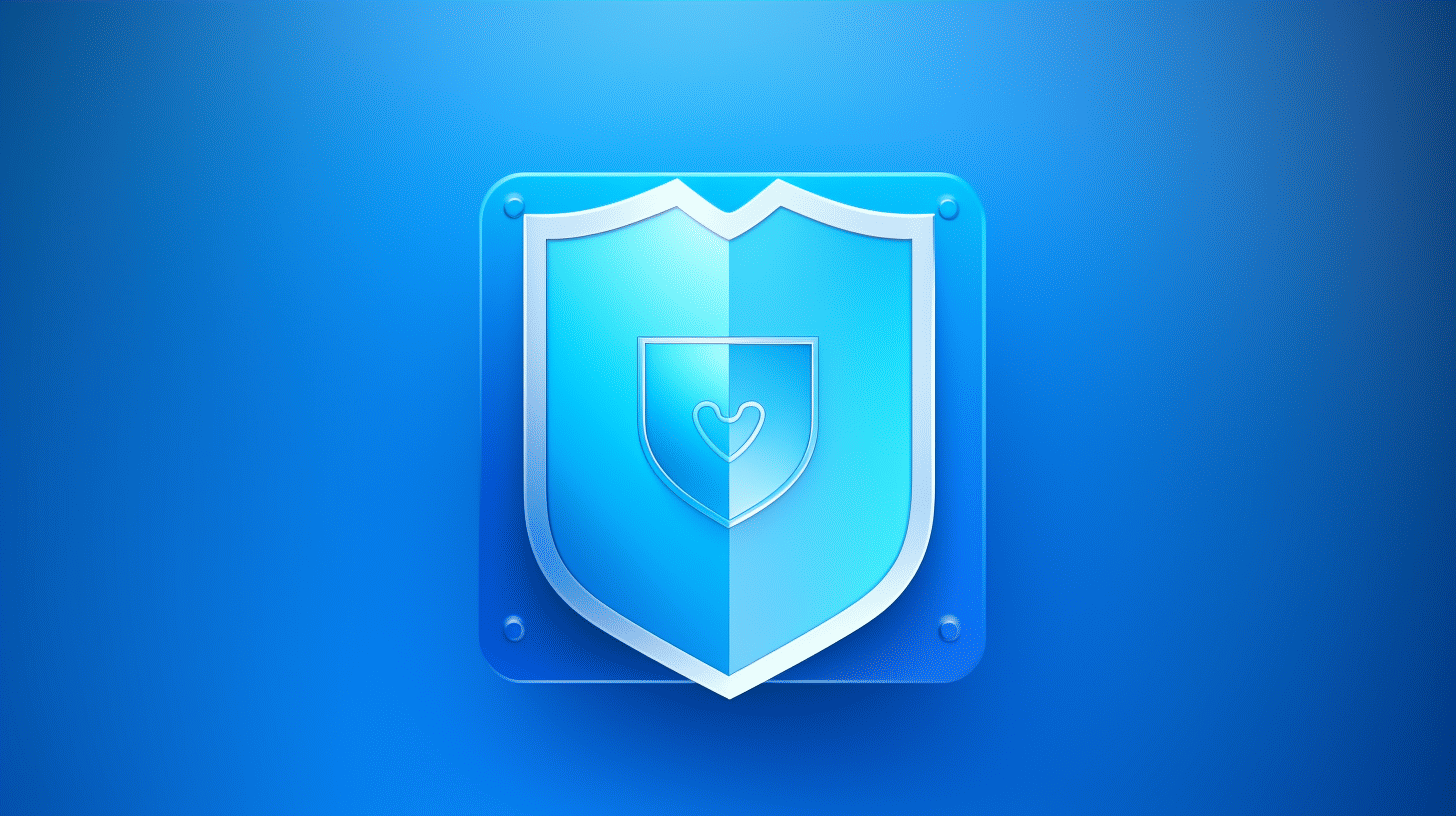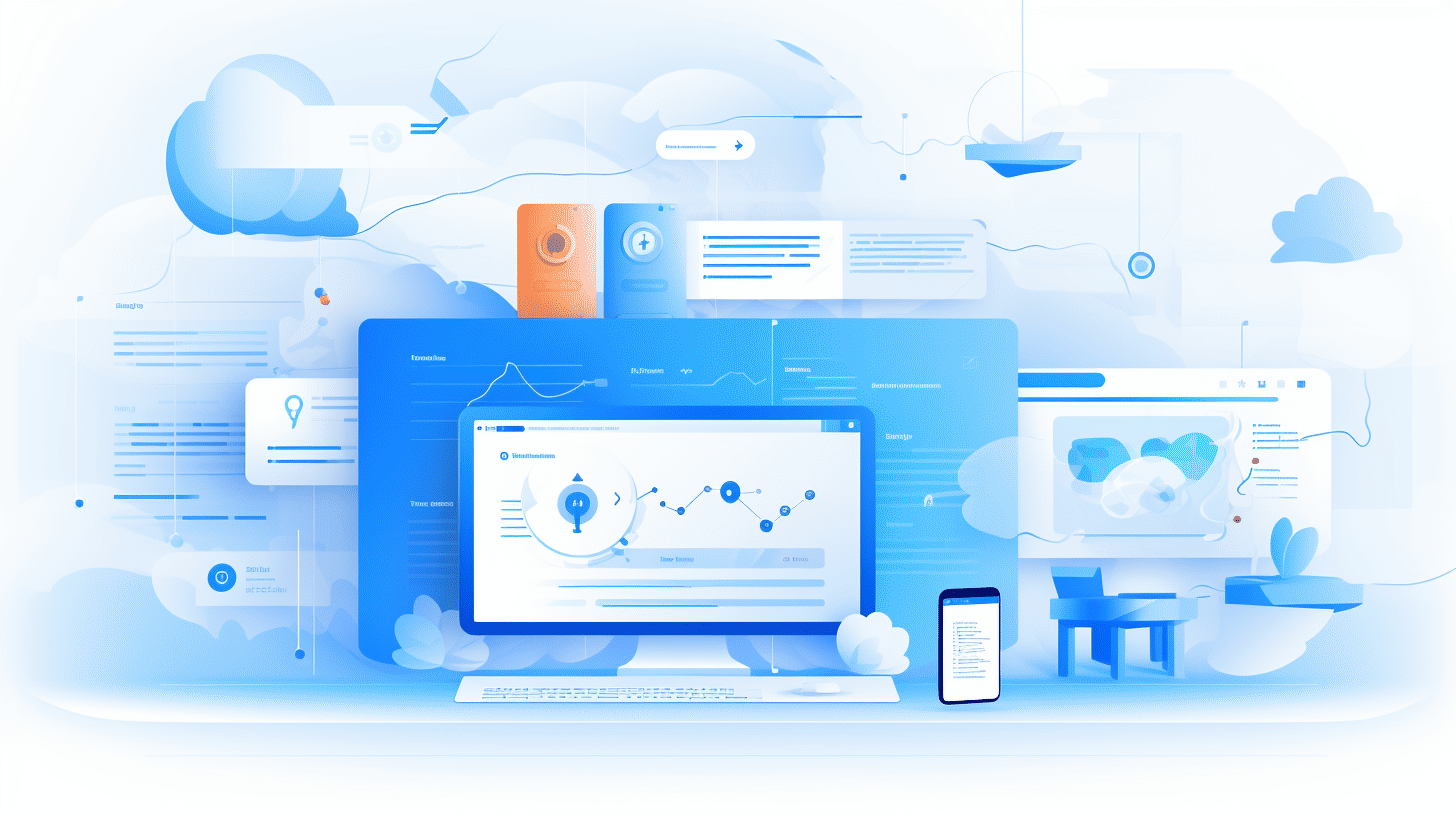在当今的数字时代,我们生活的几乎每个方面都与互联网相连,因此优先考虑网站安全至关重要。网络犯罪是一种持续的威胁,可能对各种规模的企业造成毁灭性后果。从数据泄露到泄露客户信息,网络攻击的影响可能是深远的,造成经济损失、声誉受损甚至法律后果。
但是网站安全到底包含什么内容? 它不仅仅是保护敏感数据或实施防火墙。网站安全包括一整套措施,旨在保护您的在线状态免受黑客、恶意软件和网络钓鱼等威胁。它不仅涉及防止攻击的被动措施,还涉及识别漏洞和加强防御的主动措施。
投资于强大的网站安全是成功运营值得信赖的在线业务的重要组成部分。通过实施正确的安全措施,您可以与客户建立信任,保护您的宝贵数据,并确保业务的连续性和增长。
那么,为什么网站安全对于业务发展如此重要?以下是几个主要原因:
- 保护客户数据: 保护客户的个人和财务信息对于建立信任和维持忠诚度至关重要。安全的网站可让您的客户相信您有能力保护他们的数据,从而鼓励回头客和积极的口碑推荐。
- 遵守法规: 根据您所在的行业,您可能需要遵守各种法规,这些法规要求您确保用户数据的安全性和隐私性。不遵守这些法规可能会导致严重的法律后果并损害您的声誉。
- 预防财务损失: 网络攻击可能会因直接盗窃、法律费用和损害控制工作而造成经济损失。通过投资网站安全,您可以最大限度地降低经济损失的风险,并确保您的业务财务基础稳固。
- 维护品牌声誉: 一次数据泄露或安全事件就可能对您的品牌声誉造成不可挽回的损害。客户越来越关注安全性,而一次数据泄露可能会导致信任丧失、负面评价和销量下降。
- 安心: 经营企业本身就够复杂了,更别提时刻担心网络威胁了。实施全面的网站安全措施可让您高枕无忧,让您满怀信心地专注于发展业务。
因此,无论您是小型初创公司还是成熟企业,在当今的数字环境中,优先考虑网站安全对于取得长期成功至关重要。在以下部分中,我们将深入探讨网络犯罪的成本、网络攻击的性质、最佳实践以及网络安全的新兴趋势,以便您掌握有效保护业务的知识。🛡️
网络犯罪的成本
介绍:
在当今的数字时代,网络犯罪已成为个人、企业甚至政府的重大威胁。网络犯罪的成本不仅限于经济损失,还包括对声誉、客户信任和整体稳定性的影响。在本节中,我们将深入探讨网络犯罪成本的两个关键方面:数据泄露和未来预测。
数据泄露
数据泄露对组织来说是一场噩梦,因为它们会泄露敏感信息、造成重大财务损失并损害客户的信任。以下是与数据泄露成本相关的一些关键见解:
- 2023 年数据泄露的平均成本为 $445 万美元1这个惊人的数字包括事件响应、法医调查、法律费用、客户通知和恢复工作等各种费用。
- 除了直接的财务影响外,数据泄露还可能产生长期影响。组织可能会遭受声誉损害、客户流失和监管审查增加。重建信任需要时间和对强大网络安全措施的投资。
- 中小企业 (SME) 无法免受数据泄露的影响。事实上,与大型组织相比,它们通常要承担不成比例的成本。缺乏足够的资源和专业知识使它们成为网络犯罪分子的诱人目标。
- 组织需要考虑的不仅仅是直接成本。知识产权损失、业务中断和潜在的法律责任等间接成本可能会进一步增加数据泄露的总体成本。
未来预测
网络犯罪威胁形势持续快速发展,给个人和企业带来了新的挑战。以下是一些未来预测,重点介绍了网络犯罪的预期成本:
- 预计 2023 年网络犯罪造成的损失将达到 $8 万亿美元,到 2025 年将达到惊人的 $10.5 万亿美元2网络攻击日益复杂、联网技术的广泛使用以及数字生态系统的扩张均导致了这一令人担忧的预测。
- 勒索软件攻击(加密受害者数据并索要赎金)预计将变得更加普遍。网络犯罪分子正在调整他们的策略,将目标锁定在各种规模的个人和组织上。
- 物联网 (IoT) 带来了便利和连通性,但也带来了新的漏洞。随着越来越多的设备实现互联,网络犯罪分子的潜在攻击面也随之扩大,从而导致网络攻击更加复杂和更具破坏性。
- 人工智能 (AI) 和机器学习 (ML) 在打击网络威胁方面大有可为,但网络犯罪分子也会利用它们来增强攻击能力。人工智能驱动的网络钓鱼和深度伪造技术等技术要求提高警惕并采取主动防御策略。
对于网络犯罪,保持领先一步至关重要。随着网络犯罪的成本不断上升,个人、企业和政府必须优先考虑网络安全措施,以保护自己并减少潜在损失。
“网络犯罪的成本不仅以财务来衡量,还以它对组织和个人造成的长期影响来衡量。”
🔍 你可知道? “网络犯罪”一词诞生于 20 世纪 70 年代末,最初用于描述利用计算机和信息技术实施的犯罪。此后,网络犯罪的范围不断扩大,涵盖了数字领域中各种恶意活动。
网络犯罪统计
随着技术的快速发展,网络犯罪已成为当今数字世界中日益严重的威胁。从数据泄露到身份盗窃,网络犯罪分子不断利用漏洞,对个人和组织造成严重破坏。为了真正了解情况的严重性,让我们深入研究一些令人大开眼界的网络犯罪统计数据。
全球网络安全专业人员短缺
随着对网络安全专业知识的需求不断增加,受过培训以应对网络威胁的专业人员明显短缺。根据最近的预测,到 2023 年,全球网络安全专业人员短缺预计将达到惊人的 350 万[1]。这种稀缺性使企业在防御网络攻击方面处于明显的劣势,也凸显了企业需要优先考虑强大的网络安全措施。
公司数据泄露
在当今互联互通的数字环境中,数据泄露已成为一种令人痛心的常见现象。一个令人担忧的领域是敏感的公司数据(包括软件即服务 (SaaS) 应用程序)的暴露。令人震惊的是,研究发现,一家公司的 SaaS 数据中约有 10% 暴露给所有员工,这增加了未经授权访问的风险[2]。此外,其中 6% 的数据甚至可以通过互联网供公众访问。这些发现强调了实施严格的访问控制和加密协议以保护关键业务信息的重要性。
被盗记录数量上升
网络犯罪分子窃取数据的数量令人难以置信。预计到 2023 年,网络犯罪分子将窃取超过 330 亿条记录[3]。这些被盗记录包含个人和组织的姓名、地址、社会安全号码和财务数据等敏感个人信息。此类数据泄露可能会造成严重后果,导致身份被盗、财务损失和声誉受损。
鉴于这些令人震惊的统计数据,显然网络安全应成为个人和组织的首要任务。通过投资于强大的安全措施、持续了解新兴威胁并培养安全意识文化,我们可以努力减轻网络犯罪的影响并在日益互联的世界中保护自己。
[1]: 2023 年全球网络安全专业人员短缺 350 万名
[2]: 一家公司的 SaaS 数据有 10% 暴露给所有员工,6% 向互联网开放
[3]: 预计到 2023 年,网络犯罪分子将窃取超过 330 亿条记录
微型企业和网络安全
微型企业,即在全球经济中发挥重要作用的小型创业企业,正日益成为网络攻击的目标。这些小企业通常资源有限,可能没有像大公司那样实施同等级别的网络安全措施。因此,对于希望利用漏洞并未经授权访问敏感信息的网络犯罪分子来说,它们被视为唾手可得的果实。
根据最近的数据,将网络安全列为高度优先事项的微型企业比例在 2023 年下降到 68%1。这种下降令人担忧,因为这表明一些小企业主可能没有完全了解他们面临的潜在风险或实施强有力的网络安全措施的重要性。随着网络威胁不断演变和变得更加复杂,小企业主必须主动保护其组织免受潜在攻击。
网络攻击对微型企业的影响
网络攻击可能对微型企业造成严重后果,包括财务损失、声誉受损以及潜在的法律后果。以下是微型企业主应注意的一些关键影响:
- 财务损失: 网络攻击可能导致资金被盗、业务中断以及补救措施成本增加,从而造成经济损失。小型企业可能难以从此类财务挫折中恢复过来,因此特别容易受到攻击。
- 声誉损害: 网络攻击会损害小企业的声誉,导致客户信任和忠诚度的丧失。这可能会对客户保留和获取工作产生长期影响。
- 法律后果: 根据攻击的性质,如果微型企业未能充分保护敏感的客户数据,它们可能会面临法律后果。遵守数据隐私法规对于避免处罚和法律责任至关重要。
微型企业的网络安全最佳实践
作为小企业主,优先考虑网络安全以保护您的组织和客户数据至关重要。以下是您可以实施的一些最佳做法:
- 教育你自己和你的员工: 随时了解最新的网络安全威胁和最佳实践。培训您的员工识别网络钓鱼企图、使用强密码并养成安全的浏览习惯。
- 定期更新和修补系统: 使用最新的安全补丁更新您的软件、应用程序和设备。网络犯罪分子经常利用过时系统中的漏洞。
- 实施强密码策略: 要求员工和客户创建复杂的密码,并尽可能启用多因素身份验证。定期更改密码,尤其是敏感账户的密码。
- 定期备份数据: 定期将数据备份到安全的异地位置。这样可以确保即使您成为勒索软件攻击的受害者,也可以恢复数据而无需支付赎金。
- 使用安全网络连接: 远程访问敏感信息时,请加密网络连接并使用虚拟专用网络 (VPN)。公共 Wi-Fi 网络尤其危险,因为它们很容易受到攻击。
请记住,投资网络安全是一种主动措施,可以保护您的小型企业免受潜在的网络威胁及其有害后果的影响。通过优先考虑网络安全并实施最佳实践,您可以降低风险并保护组织的敏感信息。
1 来源
网络攻击的本质
在当今互联互通的世界,网络攻击威胁已成为个人、企业和政府面临的严峻现实。网络犯罪分子不断改进其策略并利用漏洞来未经授权访问敏感信息。了解这些攻击的性质对于保护我们自己并领先犯罪者一步至关重要。
网络攻击增加
🔍 额外信息: 2023 年第三季度,网络攻击增加了 6.5%。
近年来,网络攻击不断增加,没有减缓的迹象。黑客变得越来越老练,不断寻找新的方法来破坏安全系统。网络攻击的增加可以归因于几个因素,包括:
- 技术的快速进步:随着技术以前所未有的速度发展,网络犯罪分子很快就会利用可能出现的任何漏洞。
- 对数字基础设施的依赖性越来越强:随着数字化的进步,个人和企业在网上存储的敏感数据越来越多,这让他们成为网络犯罪分子的目标。
- 网络犯罪的利润丰厚性质:网络犯罪已成为黑客的一项高利润业务,有可能通过勒索软件攻击和数据盗窃等活动获得巨额金钱收益。
识别和遏制违规行为
🔍 额外信息: 平均而言,2023 年发现并控制违规行为需要 277 天。
识别和遏制违规行为是减轻网络攻击造成的损害的关键步骤。不幸的是,违规行为发生时并不总是容易被发现。网络犯罪分子通常采用复杂的技术来隐藏其踪迹,并在系统内不被发现。
- 主动监控的重要性:实施强大的监控系统有助于尽早发现网络中的漏洞和可疑活动。这使组织能够迅速做出反应并控制损失。
- 事件响应计划:制定明确的事件响应计划对于有效管理网络攻击至关重要。该计划应概述发生违规时应采取的步骤,包括通信协议、遏制措施和恢复流程。
新兴网络安全威胁
🔍 额外信息: 人工智能攻击、勒索软件和供应链攻击将成为 2024 年的主要威胁。
随着技术的进步,网络犯罪分子所采用的技术也在不断进步。了解新出现的网络安全威胁非常重要,这样才能充分防范这些威胁。以下是未来一年需要注意的一些威胁:
- 人工智能攻击:黑客利用人工智能自动发起攻击,使其更加复杂且难以检测。这些攻击利用机器学习算法来绕过传统的安全措施。
- 勒索软件:勒索软件攻击仍然是一个主要问题,网络犯罪分子会加密受害者的数据并索要赎金以换取数据。这些攻击可能对个人和组织造成重大的财务和声誉损失。
- 供应链攻击:网络犯罪分子越来越多地将供应链作为目标,以获取未经授权的网络访问权。通过破坏供应商的系统,他们可以利用对该供应商的信任来访问更大的网络。
锚链接: 要了解有关恶意软件清除策略的更多信息,请单击 在这里,.
全球网络安全市场现状
全球网络安全市场目前正在快速增长,并且没有放缓的迹象。事实上,预计到 2023 年,该市场规模将达到惊人的 $2660 亿美元[1]. 网络安全解决方案需求的激增是由于个人、企业和政府每天面临的网络威胁越来越频繁且越来越复杂。
促进网络安全市场增长的因素:
- 网络攻击增多: 随着网络攻击变得越来越普遍和具有破坏性,各组织正在优先考虑其网络安全策略以保护其敏感数据和数字资产。
- 新兴技术: 物联网 (IoT)、云计算和人工智能 (AI) 等新兴技术的普及带来了新的漏洞,需要采取强有力的网络安全措施来防止潜在的漏洞。
- 严格的数据保护条例: 全球各国政府都颁布了严格的数据保护法规,例如欧盟的《通用数据保护条例》(GDPR)。这些法规对未能保护客户数据的组织处以高额罚款和罚金,这推动了对强大网络安全解决方案的需求。
- 意识不断增强: 个人和企业对网络威胁的潜在风险的认识不断提高,导致对网络安全产品和服务的需求增加。
- 数字化转型举措: 随着企业进行数字化转型并将业务转移到线上,对网络安全解决方案的需求也越来越大,以防范网络风险并确保业务连续性。
网络安全市场的挑战:
虽然网络安全市场提供了巨大的增长机会,但也面临着一些需要解决的挑战:
- 专业技能人才短缺: 缺乏熟练的网络安全专业人员来满足该领域日益增长的专业知识需求。这种短缺妨碍了组织有效管理和应对网络威胁的能力。
- 复杂且不断演变的威胁形势: 网络威胁不断演变,越来越复杂。网络威胁的这种动态特性要求网络安全解决方案不断创新和调整,以领先于恶意行为者。
- 预算限制: 许多组织,尤其是中小型企业 (SME),在投资强大的网络安全解决方案时面临预算限制。这种限制可能使它们容易受到网络攻击。
总之,由于网络威胁日益猖獗,全球网络安全市场正在经历显著增长。各个行业的组织都在投资先进的网络安全解决方案,以保护自己免受潜在的数据泄露和财务损失。然而,需要解决诸如熟练专业人员短缺和预算限制等挑战,以确保有效的网络安全措施并防范不断演变的威胁。
[1]: 全球网络安全市场规模、份额、行业分析、增长、趋势、预测 2020 - 2025
网络安全的最佳实践和漏洞
🔒 网络安全最佳实践和漏洞简介 🔒
随着对技术的依赖日益增加以及数字业务运营的兴起,网络安全已成为保护敏感信息免受恶意攻击的关键方面。当企业和个人在数字环境中探索时,必须了解增强网络安全的最佳实践以及构成重大风险的漏洞。
Web 应用程序安全
Web 应用程序在业务运营中发挥着至关重要的作用,为客户互动、数据存储和在线交易提供了平台。然而,它们也是网络犯罪分子的主要目标,他们利用漏洞谋取私利。请看以下令人大开眼界的统计数据:
- 17% 的网络攻击专门针对 Web 应用程序中的漏洞[1].
- 高达 98% 的 Web 应用程序容易受到网络钓鱼、勒索软件和 DDoS 攻击等攻击[2].
为了减轻这些风险,实施强大的 Web 应用程序安全实践至关重要。这包括:
- 定期漏洞扫描:进行例行扫描,及时发现并解决潜在漏洞。
- 实施强身份验证:利用多因素身份验证并实施强密码策略来防止未经授权的访问。
- 补丁管理:及时了解安全补丁和软件更新,以解决 Web 应用程序中的已知漏洞。
- 安全编码实践:采用安全编码技术开发能够抵御常见攻击媒介的 Web 应用程序。
- Web 应用程序防火墙:部署 Web 应用程序防火墙来过滤恶意流量并防范已知的攻击模式。
- 定期备份:定期备份网络应用程序数据,以便在发生网络攻击或数据丢失事件时恢复运行。
通过实施这些最佳实践,组织可以显著增强其 Web 应用程序的安全性并确保敏感数据的保护。
网络卫生
网络卫生是指保持良好的安全做法和习惯,以最大限度地降低网络攻击的风险。就像个人卫生可以防止疾病传播一样,实行适当的网络卫生对于保护数字资产和防止未经授权的访问至关重要。网络卫生的一些关键要素包括:
- 强密码:密码应使用大小写字母、数字和特殊字符的组合。避免在多个帐户中使用相同的密码。
- 定期软件更新:保持操作系统、应用程序和安全软件为最新版本,以修补漏洞并防范新出现的威胁。
- 固定设备:启用自动屏幕锁定、加密敏感数据并在设备上使用生物识别身份验证。
- 网络钓鱼意识:教育员工和个人识别网络钓鱼企图并避免可疑的电子邮件、链接和下载。
- Wi-Fi 安全:使用安全的Wi-Fi网络,避免使用公共Wi-Fi进行敏感交易,并启用加密和身份验证协议。
通过将这些网络卫生实践纳入日常生活,个人和组织可以显著降低成为网络攻击受害者的风险。
威胁情报
在网络威胁快速发展的形势下,组织需要领先网络犯罪分子一步。这就是威胁情报发挥作用的地方。威胁情报涉及系统地收集和分析数据,以识别潜在威胁并制定主动安全措施。以下是利用威胁情报的一些关键方面:
- 实时监控:使用自动化工具和威胁情报源持续监控潜在威胁和安全事件。
- 主动威胁搜寻:分析模式、攻击指标 (IOC) 和新兴攻击媒介,以识别潜在威胁和漏洞。
- 协作与共享:参与威胁情报社区,共享信息,并与业内同行合作,以随时了解不断演变的威胁。
- 量身定制的安全措施:根据威胁情报洞察实施安全控制和协议,以防范与组织相关的特定威胁。
通过将威胁情报作为其网络安全战略的一部分,组织可以增强其有效检测和应对新出现的威胁的能力。
🔒 结论:优先考虑网络安全最佳实践 🔒
随着网络威胁不断演变并变得越来越复杂,组织和个人必须优先考虑网络安全最佳实践。强大的 Web 应用程序安全性、网络卫生和利用威胁情报是保护数字资产和保护敏感信息的关键步骤。通过保持主动性、保持良好的安全习惯并随时了解潜在威胁,我们可以为所有人维护一个安全的数字环境。因此,立即开始实施这些最佳实践并确保保护您的数字资产!
网络安全趋势
在这个快速发展的数字环境中,技术在我们的日常生活中扮演着不可或缺的角色,对强大的网络安全措施的需求比以往任何时候都更加重要。网络威胁不断演变,组织和个人必须及时了解最新的网络安全趋势。在这里,我们将探讨塑造网络安全格局的三个关键趋势:人工智能治理、安全性提高和人工智能驱动的网络犯罪。
人工智能治理
人工智能 (AI) 已成为众多行业的变革者,网络安全也不例外。随着人工智能技术的不断发展,它既带来了机遇,也带来了挑战。人工智能在网络安全中的一个重要方面是治理。
- 确保透明度和问责制:人工智能算法和系统应透明且负责,以确保做出公平、公正和合乎道德的决策。需要建立适当的治理框架,以规范人工智能在网络安全中的使用,并防止潜在的滥用。
- 监管网络安全领域的人工智能:政府和监管机构正在努力制定法律法规,以规范人工智能在网络安全领域的使用。这些法规旨在在促进创新与保护个人和组织免受网络威胁之间取得平衡。
- 协作和信息共享:建立合作伙伴关系和平台,促进行业专家、研究人员和网络安全专业人员之间的协作和信息共享,对于制定有效的人工智能治理框架至关重要。这种协作方法可确保网络安全领域人工智能系统的开发和部署得到良好监控,并与最佳实践保持一致。
增强安全性
随着复杂网络攻击的增多,组织和个人都在不断寻求增强网络安全态势的方法。为了解决这些问题并加强安全措施,出现了几种趋势:
- 零信任架构:传统的基于边界的安全模型已不再适用。零信任架构将每个用户和设备视为可能受到攻击,这种架构已越来越受欢迎。这种方法强调在每个接入点对用户和设备进行身份验证和授权,以最大限度地减少潜在的安全漏洞。
- 多因素身份验证:随着复杂的网络钓鱼和凭证盗窃攻击的兴起,使用多因素身份验证 (MFA) 变得至关重要。MFA 通过要求用户在授予访问权限之前提供两种或更多种形式的身份证明,增加了额外的安全层。
- 端点安全:随着远程工作变得越来越普遍,保护笔记本电脑、智能手机和平板电脑等端点设备已变得至关重要。端点安全解决方案(包括强大的防病毒软件、加密和远程数据擦除)可保护个人和组织免受针对这些设备的网络威胁。
人工智能驱动的网络犯罪
虽然人工智能是加强网络安全防御的强大盟友,但网络犯罪分子也利用它来发动更复杂的攻击。人工智能驱动的网络犯罪已成为最令人担忧的趋势之一,需要网络安全界持续警惕:
- 自动化和定向攻击:网络犯罪分子正在使用人工智能算法大规模自动化攻击,例如鱼叉式网络钓鱼和凭证填充。这些攻击越来越具有针对性,使用传统安全措施很难检测到。
- 深度伪造和社会工程:人工智能驱动的深度伪造技术使网络犯罪分子能够操纵和冒充个人,使社会工程攻击更加令人信服。这种趋势利用个人和组织的信任并操纵他们泄露敏感信息,给个人和组织带来了重大风险。
- 逃避检测系统:人工智能正被用于开发能够绕过传统检测系统的更复杂的恶意软件。网络犯罪分子采用多态恶意软件等技术,这些技术不断变异以逃避检测,这对网络安全专业人员构成了重大挑战。
总之,人工智能治理、改进的安全措施和人工智能驱动的网络犯罪是塑造网络安全格局的主要趋势。随着技术的进步,组织和个人必须保持警惕,适应这些趋势,并制定强大的网络安全策略来防范不断演变的网络威胁。
多因素身份验证的作用
🔒 在日益数字化的世界中,安全漏洞和数据盗窃已变得十分常见,保护敏感信息至关重要。🔒
🌐 多因素身份验证 (MFA) 已成为身份验证的黄金标准,在传统用户名和密码组合之外提供了额外的安全保障。🌐
使用 MFA,用户需要提供多种形式的验证才能访问帐户或系统。这一额外的保护层可显著降低未经授权访问的风险并增强整体安全性。但为什么多因素身份验证在当今的数字环境中如此重要?让我们深入探讨其关键作用。
💡 为什么多因素身份验证很重要? 💡
1.增强安全性
- MFA 要求用户提供多重身份验证因素,例如他们知道的东西(密码)、他们拥有的东西(智能手机或令牌)以及他们自己的东西(生物识别),从而为身份验证过程增加了多层保护。这种多层方法使攻击者获得未经授权的访问权限变得更加困难。
- 通过结合不同类型的身份验证因素,MFA 可以降低身份盗窃、凭证填充攻击和暴力攻击的风险。
2. 防范网络钓鱼和社会工程
- 网络钓鱼和社会工程攻击变得越来越复杂,诱使用户在不知情的情况下泄露其登录凭据。MFA 要求除了密码之外还需一个额外的身份验证因素,因此可以有效防御此类攻击。即使攻击者设法获取用户的密码,他们仍然需要额外的因素才能获得访问权限。
3. 遵守法规和标准
- 在保护客户数据方面,许多行业(例如金融、医疗保健和政府)都受到严格的监管要求。实施 MFA 可帮助组织遵守这些法规和标准,确保敏感数据的安全,并降低代价高昂的处罚和声誉受损的风险。
- 支付卡行业数据安全标准 (PCI DSS) 和通用数据保护条例 (GDPR) 等监管框架通常要求或强烈建议使用 MFA 作为安全措施。
4.便捷的用户体验
- 虽然安全至关重要,但用户体验不应受到影响。随着技术的进步,实施 MFA 变得更加用户友好,可提供无缝的身份验证流程。
- 用户可以根据自己的喜好和方便程度,选择多种身份验证方法,包括短信代码、推送通知、指纹扫描、面部识别和硬件令牌。
💭 结论 💭
在当今互联互通的世界中,保护敏感信息至关重要。MFA 通过实施多层身份验证提供有效的解决方案,大大降低了未经授权访问的风险并增加了额外的安全级别。通过结合增强的安全性、防范网络钓鱼、遵守法规和便捷的用户体验,多因素身份验证成为保护数字资产的重要工具。拥抱 MFA,在对抗网络威胁的战斗中领先一步。
医疗保健行业的网络安全
在当今的数字时代,医疗保健行业在网络安全方面面临诸多挑战。随着电子健康记录 (EHR)、远程医疗和联网医疗设备的使用日益增多,保护患者数据变得比以往任何时候都更加重要。网络犯罪分子的手段不断演变,使医疗保健组织难以跟上并保护敏感信息。
医疗数据泄露风险高昂
由于拥有大量有价值的数据,医疗保健机构已成为网络攻击的主要目标。从个人身份信息 (PII) 到医疗记录和保险详细信息,这些数据可以在暗网上以高价出售。一次数据泄露就可能导致严重后果,包括:
- 财务损失: 恢复数据泄露可能让医疗保健机构损失数百万美元。这包括与事件响应、法律费用、监管罚款和潜在诉讼相关的费用。
- 声誉受损: 数据泄露会严重损害医疗机构的声誉,削弱患者的信任并赶走潜在客户。重建这种信任需要时间和资源。
- 患者安全: 除了泄露敏感信息外,网络攻击还会影响患者安全。例如,黑客控制联网医疗设备后,可能会通过操纵药物剂量或改变生命体征来伤害患者。
医疗保健领域新兴的网络安全威胁
随着网络犯罪分子不断创新,医疗保健组织必须保持警惕并适应不断变化的网络安全威胁。以下是医疗保健行业面临的一些新挑战:
- 勒索软件攻击: 勒索软件是一种恶意软件,它会加密受害者的文件并要求支付赎金才能恢复访问权限。在医疗保健领域,这可能会导致关键服务中断,对某些患者来说,这是生死攸关的情况。
- 物联网(IoT)漏洞: 联网医疗设备的日益普及带来了新的网络安全风险。这些设备(例如胰岛素泵、心脏起搏器和 MRI 机器)可能成为黑客的目标,以获取未经授权的访问权限或操纵其功能。
- 内部威胁: 并非所有网络安全威胁都来自外部行为者。心怀不满的员工或承包商可能会故意窃取或泄露敏感数据,对组织及其患者造成重大伤害。
强大的网络安全措施的重要性
为了应对这些威胁并保护患者数据,医疗保健组织必须优先考虑网络安全并实施强有力的措施。以下是他们应采取的基本步骤:
- 定期风险评估: 定期进行风险评估有助于识别系统和流程中的漏洞和潜在弱点,从而使组织能够主动解决这些问题。
- 员工培训和意识: 员工在预防网络攻击方面发挥着至关重要的作用。定期培训课程可以帮助确保员工了解网络钓鱼诈骗、强密码做法和其他网络安全最佳实践。
- 多重身份验证 (MFA): 使用 MFA 可增加一层额外的安全保护,要求用户提供多项证据来验证其身份。这可以防止未经授权访问系统和数据。
随着医疗行业继续拥抱数字化转型,强大的网络安全措施的重要性怎么强调也不为过。通过主动应对新出现的威胁并培育网络安全文化,医疗机构可以保护患者数据、维护信任并确保患者的整体安全和健康。
网络威胁和最佳实践
🔒简介:
在当今的数字时代,保护我们自己和我们的在线资产免受网络威胁变得比以往任何时候都更加重要。随着网络犯罪分子的手段越来越复杂,了解最新威胁并采取最佳实践来防范这些威胁至关重要。本文探讨了一些解决网络安全漏洞的有效策略,并概述了遵循最佳实践的重要性。
应对威胁和弱点
网络攻击对个人和组织都构成了重大风险。从恶意软件和网络钓鱼攻击到勒索软件和数据泄露,威胁形势不断演变。但我们如何才能有效地应对这些威胁和漏洞?以下是一些关键策略:
- 定期漏洞评估: 定期进行漏洞评估有助于识别系统和网络中的潜在弱点。通过主动扫描漏洞,您可以采取纠正措施,在安全漏洞被利用之前修补它们。
- 实施强大的防火墙: 防火墙是内部网络与外部威胁之间的一道屏障。它监控传入和传出的网络流量,阻止可疑或未经授权的访问。通过正确配置防火墙并使其保持最新状态,您可以显著降低网络攻击的风险。
SSL 证书和加密
保护传输中的敏感数据的最有效方法之一是使用 SSL(安全套接字层)证书和加密。SSL 证书是在网站和用户浏览器之间建立安全连接的数字证书,可确保在它们之间传输的数据保持私密和安全。以下是 SSL 证书和加密至关重要的原因:
- 数据保护: SSL 证书会加密数据,使任何截获数据的人都无法读取。这可以保护信用卡详细信息、登录凭据和个人数据等敏感信息免遭不法分子的利用。
- 信任与声誉: SSL 证书提供视觉指示,例如 URL 中的挂锁图标和“https”,以向访问者保证网站是安全的。这不仅可以增强信任,还有助于保护您的品牌声誉。
设备和软件更新
许多网络攻击利用了过时软件和操作系统中的漏洞。未能及时更新设备、应用程序和插件可能会让您面临已知的安全漏洞。以下是保持更新至关重要的原因:
- 修补漏洞: 软件更新通常包含修复已知漏洞的安全补丁。通过定期更新设备和软件,您可以确保获得针对潜在威胁的最新保护。
- 防范恶意软件: 恶意软件创建者不断寻找利用软件漏洞的新方法。通过保持设备和软件更新,您可以最大限度地降低遭受恶意软件攻击的风险。
遵循最佳实践的重要性
虽然实施特定的安全措施至关重要,但遵循最佳实践也同样重要。以下是一些需要牢记的关键最佳实践:
- 强大而独特的密码: 为每个在线帐户使用强而独特的密码可以大大增强您的安全性。避免使用常用密码,并考虑使用可靠的密码管理器来安全地存储您的凭据。
- 多重身份验证 (MFA): 启用 MFA 会增加一层额外的安全性,因为除了密码之外还需要额外的验证,例如指纹或短信代码。
- 定期数据备份: 定期备份数据对于防范勒索软件攻击或数据丢失至关重要。这样您就可以恢复文件和系统,而无需支付赎金或丢失宝贵信息。
总而言之,解决网络安全威胁和漏洞需要采取积极主动的方法。通过实施强大的安全措施,例如定期进行漏洞评估、使用 SSL 证书和加密、保持设备和软件更新以及遵循最佳实践,您可以显著降低成为网络攻击受害者的风险。保持警惕、随时了解情况并保持安全!
结论
总之,当谈到网站安全的力量时,显然企业不能忽视其数字存在的这一关键方面。网络犯罪的成本不断增加,加上网络攻击日益复杂,凸显了投资于强大的网络安全措施的重要性。
通过实施 Web 应用程序安全、网络卫生和威胁情报等最佳实践,企业可以显著降低其遭受网络威胁的可能性。此外,使用多因素身份验证可增加一层额外的保护,确保只有授权人员才能访问敏感信息。
对于医疗行业的企业来说,网络安全的需求更加迫切,因为数据泄露的潜在后果可能非常严重。实施 SSL 证书和加密以及定期更新设备和软件是保护患者信息的关键措施。
企业必须了解新兴的网络安全趋势并相应地调整安全措施。人工智能治理和人工智能驱动的网络犯罪的兴起带来了新的挑战,但也为提高安全性提供了机会。
在当今网络威胁普遍存在的数字环境中,Managed-WP 提供的解决方案超越了传统的网络托管。借助我们优质的托管 WordPress 云托管平台,企业可以享受简化的基础设施、自由的数字体验以及 24/7/365 全天候专家解决问题。访问 托管-WP.com 详细了解我们如何帮助保护您的网站并自信地发展您的业务。🚀
常见问题
- 为什么网站安全对于业务发展如此重要?
网站安全对于业务发展至关重要,因为它有助于保护敏感的客户数据,与客户建立信任和信誉,防止因数据泄露造成的收入损失,避免法律和监管处罚,并确保业务运营不中断。
- 有哪些常见的网站安全威胁?
一些常见的网站安全威胁包括恶意软件攻击、网络钓鱼攻击、DDoS 攻击、SQL 注入、跨站点脚本 (XSS) 和暴力攻击。采取适当的安全措施来防范这些威胁至关重要。
- 我如何增强我的网站的安全性?
您可以通过实施强密码、定期更新软件和插件、使用 SSL 加密、安装安全插件、定期备份、进行安全审核以及培训您的团队了解最佳安全实践来增强网站的安全性。
- 有哪些推荐的网站安全插件?
一些推荐的网站安全插件是:1. Sucuri Security,2. Wordfence Security,3. iThemes Security,4. All In One WP Security & Firewall,以及 5. BulletProof Security。这些插件提供恶意软件扫描、防火墙保护、登录安全等功能。
- 如果我的网站被黑客入侵,我该怎么办?
如果您的网站遭到黑客攻击,迅速采取行动很重要。首先,隔离受影响的网站。然后,扫描和清除恶意软件、更改密码、更新软件和插件、从干净的备份中恢复,并加强安全措施。如果需要,请考虑寻求专业帮助。


















